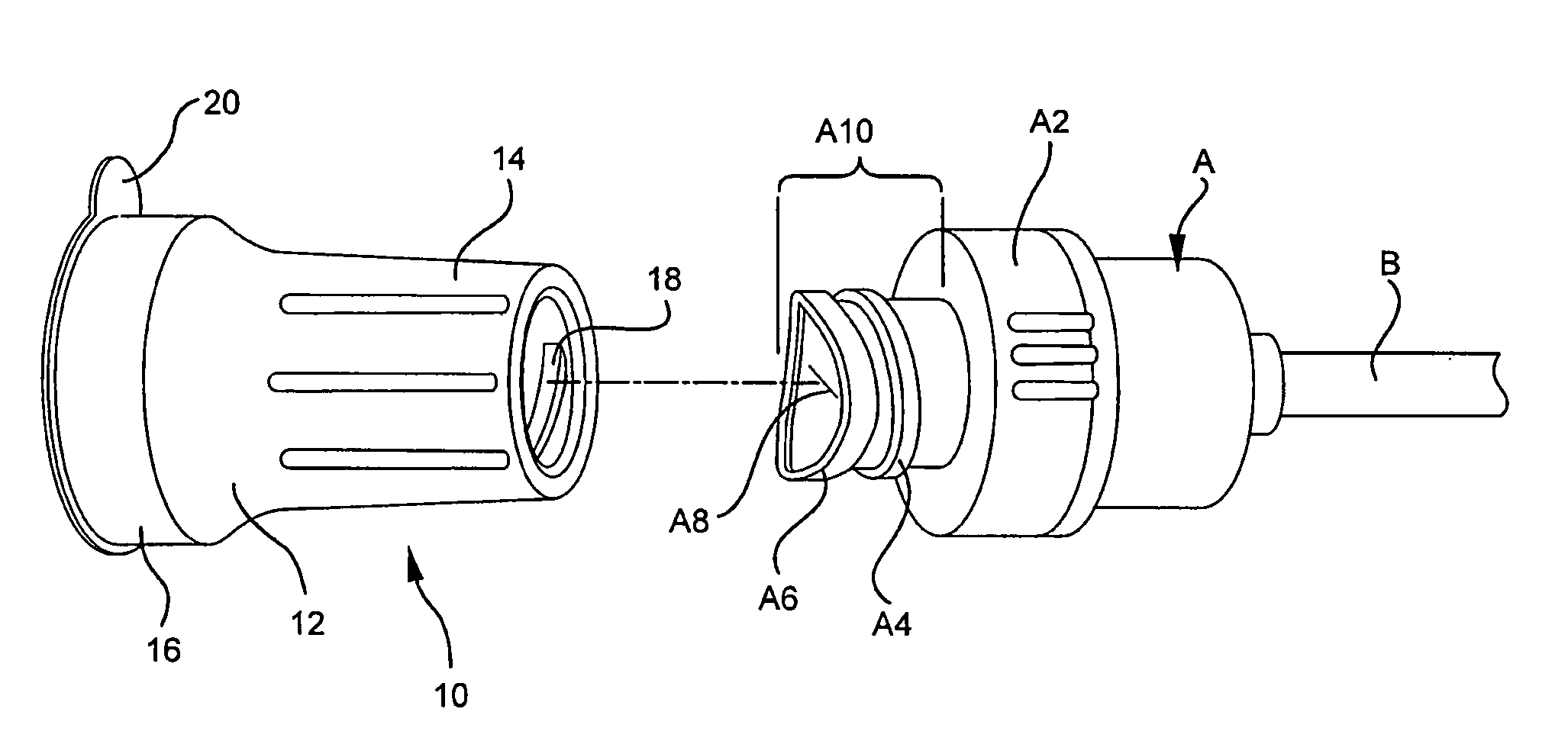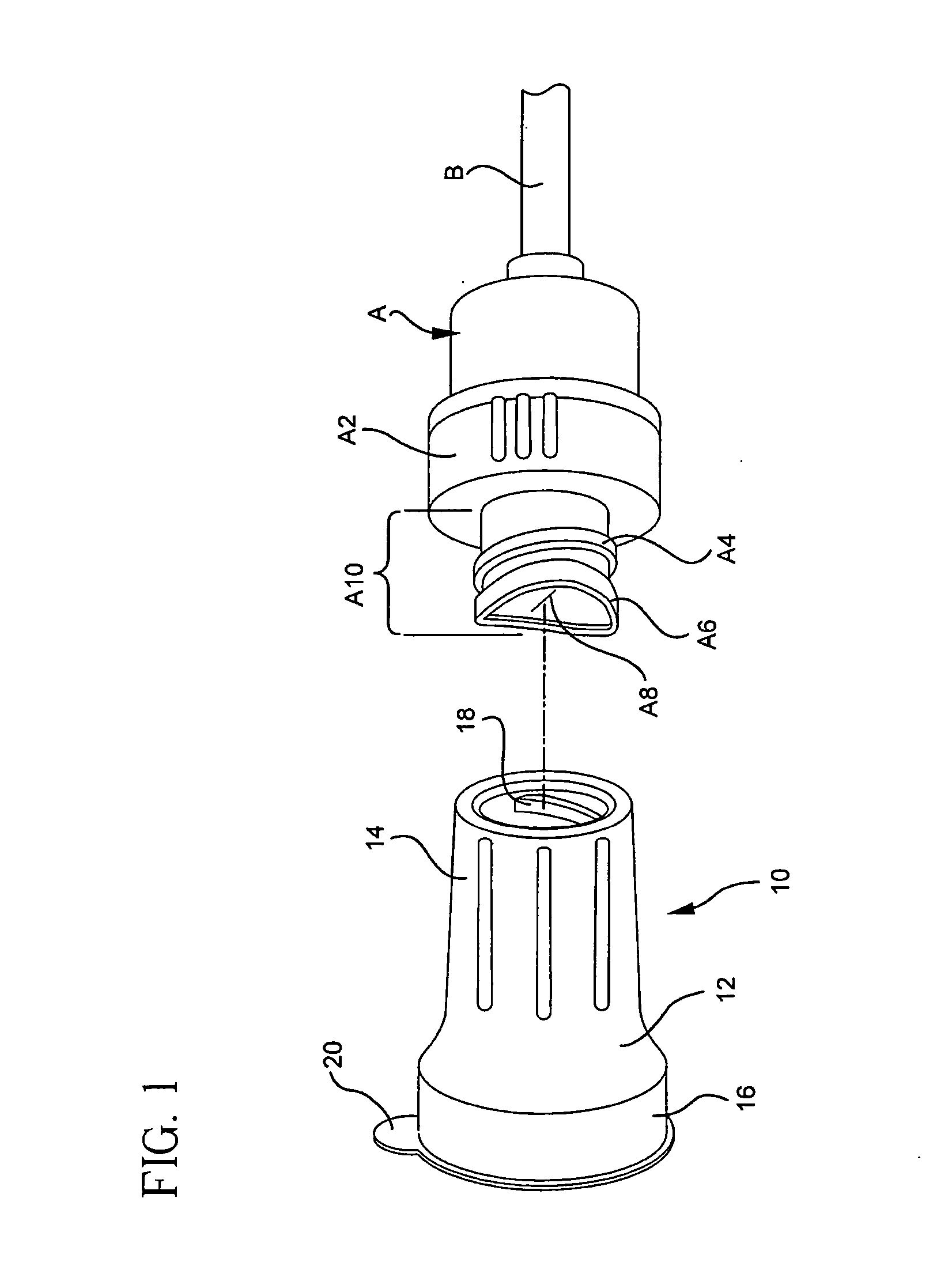Patient fluid line access valve antimicrobial cap/cleaner
a technology for access valves and fluid lines, which is applied in the field can solve the problems of catheter-related bloodstream infections, affecting the health of patients, and affecting the treatment of patients, and achieves the effect of reducing the amount of microorganisms
- Summary
- Abstract
- Description
- Claims
- Application Information
AI Technical Summary
Benefits of technology
Problems solved by technology
Method used
Image
Examples
Embodiment Construction
[0017]FIG. 1 shows an exploded view of patient fluid line access valve cap / cleaner device 10 with patient fluid line access valve A and patient fluid line B. Cap / cleaner 10 includes housing 12 with cap end 14, cleaning end 16 and thread 18; and lid 20. Access valve A includes housing A2 with thread A4 and septum A6 with slit A8. The exposed surface of septum A6 along with at least a portion of the exposed surface of housing A2 that surrounds septum A6, form access portion A10 of access valve A. Line B may be any of a number of types that include, for example, intravascular (IV) lines and catheters, saline wells, arterial lines and hemodialysis lines.
[0018] As will be described in more detail below, cap end 14 of cap / cleaner 10 attaches to access portion A10 of access valve A. Housing 12 is made from any of a number of types of plastic materials such as polycarbonate, polypropylene, polyethylene, glycol-modified polyethylene terephthalate, acrylonitrile butadiene styrene or any othe...
PUM
 Login to View More
Login to View More Abstract
Description
Claims
Application Information
 Login to View More
Login to View More - R&D
- Intellectual Property
- Life Sciences
- Materials
- Tech Scout
- Unparalleled Data Quality
- Higher Quality Content
- 60% Fewer Hallucinations
Browse by: Latest US Patents, China's latest patents, Technical Efficacy Thesaurus, Application Domain, Technology Topic, Popular Technical Reports.
© 2025 PatSnap. All rights reserved.Legal|Privacy policy|Modern Slavery Act Transparency Statement|Sitemap|About US| Contact US: help@patsnap.com



